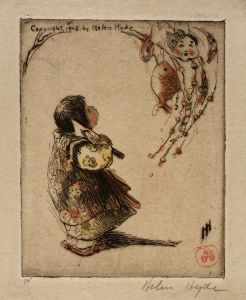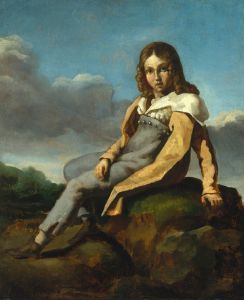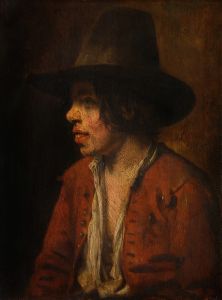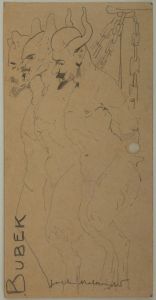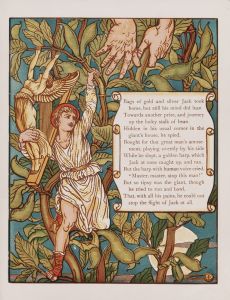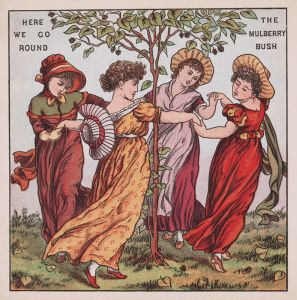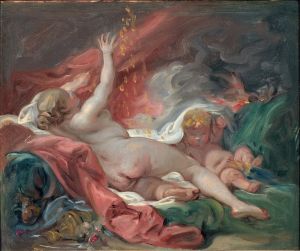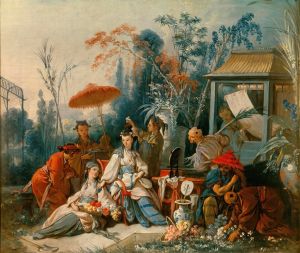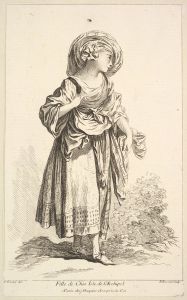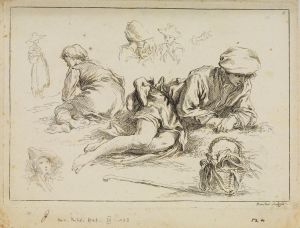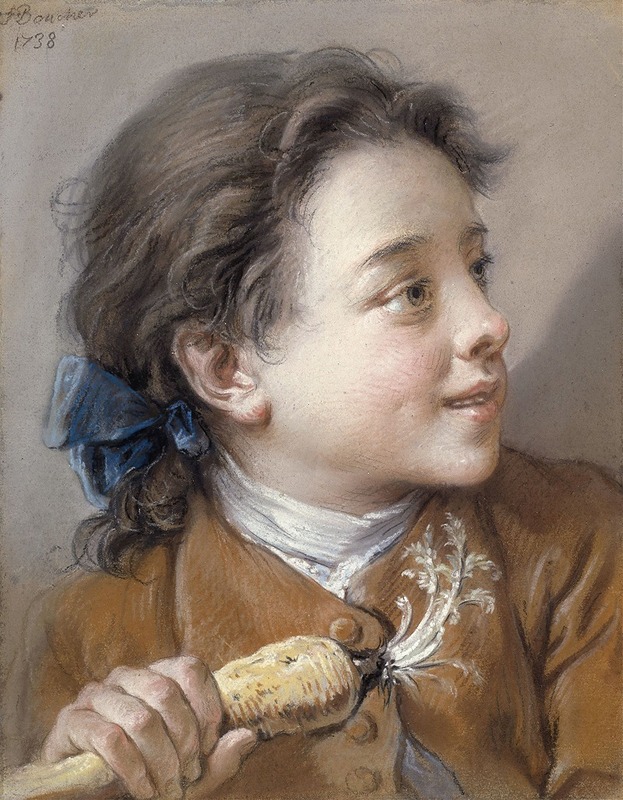
Boy with a Carrot
A hand-painted replica of François Boucher’s masterpiece Boy with a Carrot, meticulously crafted by professional artists to capture the true essence of the original. Each piece is created with museum-quality canvas and rare mineral pigments, carefully painted by experienced artists with delicate brushstrokes and rich, layered colors to perfectly recreate the texture of the original artwork. Unlike machine-printed reproductions, this hand-painted version brings the painting to life, infused with the artist’s emotions and skill in every stroke. Whether for personal collection or home decoration, it instantly elevates the artistic atmosphere of any space.
"Boy with a Carrot" is a painting by the French artist François Boucher, who was one of the most prominent painters of the Rococo style in the 18th century. Born in Paris in 1703, Boucher became known for his idyllic and voluptuous paintings on classical themes, decorative allegories, and pastoral scenes. His work is characterized by its playful and light-hearted nature, often featuring soft colors and delicate brushwork.
The painting "Boy with a Carrot" depicts a young boy holding a large carrot, with a playful and somewhat mischievous expression on his face. The boy is dressed in simple, rustic clothing, which contrasts with the more elaborate and ornate costumes often seen in Boucher's other works. The background of the painting is relatively plain, drawing attention to the boy and his carrot.
Boucher's ability to capture the innocence and charm of childhood is evident in this painting. The boy's rosy cheeks and bright eyes convey a sense of vitality and youthfulness. The carrot, a humble and everyday object, is rendered with the same care and attention to detail as the boy's features, highlighting Boucher's skill in depicting both human figures and still life elements.
François Boucher was a favorite of Madame de Pompadour, the influential mistress of King Louis XV, and his work was highly sought after by the French aristocracy. His paintings often adorned the walls of the royal palaces and the homes of the wealthy elite. Boucher's influence extended beyond painting; he also designed tapestries, theater sets, and costumes, contributing to the decorative arts of his time.
"Boy with a Carrot" is a fine example of Boucher's ability to blend realism with a sense of whimsy. The painting reflects the Rococo style's emphasis on lightness, elegance, and an appreciation for the simple pleasures of life. While Boucher's more famous works often feature mythological or allegorical subjects, this painting stands out for its focus on a more everyday, yet equally charming, scene.
The exact date of the painting's creation is not well-documented, but it is believed to have been painted during the height of Boucher's career in the mid-18th century. Today, "Boy with a Carrot" is part of a private collection and is not as widely known as some of Boucher's other masterpieces. However, it remains a testament to his versatility and his ability to capture the essence of his subjects with grace and precision.
In summary, "Boy with a Carrot" by François Boucher is a delightful painting that showcases the artist's talent for portraying youthful innocence and everyday beauty. It is a charming example of the Rococo style and reflects Boucher's significant contribution to the art of his time.






